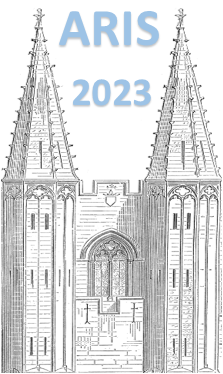Orateur
Description
The radiopharmaceuticals toolbox has expanded dramatically over the last few years. Isotopes with well-established chemistries continue to be used routinely, while newer isotopes have grown more available, with a wider variety of chemistries, decay modes and in vivo behaviors, making it easier to pair radiopharmaceuticals for imaging and therapy, a pairing referred to as radiomolecular theranostics. In much the same way that the development of targeted agents and immunotherapy revolutionized medical therapies for cancer, the rapid development and availability of these new isotopes and agents has fundamentally changed the landscape for radiopharmaceutical therapy.
Radiomolecular Precision Oncology is being driven by rapid advances in novel diagnostics and therapeutic interventions. As part and integral in the current era of precision oncology, theranostics aims to identify the appropriate molecular targets in neoplasms (diagnostic tool), so that the optimal ligands and radionuclides (therapeutic tool) with favorable labeling chemistry can be selected for personalized management of a specific disease, taking into consideration the specific patient, and subsequently monitor treatment response for personalized cancer care.
Peptide receptor radionuclide therapy (PRRT) and PSMA Radioligand Therapy (PRLT)
Over the past two decades, the use of 68Ga labeled peptides for somatostatin receptor (SSTR)-targeted PET imaging followed by beta emitters like 177Lu and 90Y or alpha-emitters like 225Ac and 212Pb labeled SSTR-analogues for peptide receptor radionuclide therapy (PRRT) has demonstrated remarkable success in the management of neuroendocrine neoplasms and paved the way to other theranostics indications.
Targeted Alpha radioligand therapy (ART)
While beta-emitters have demonstrated efficacy, alpha-emitters have a 100-fold higher LET. Remarkable results have been achieved by switching non-responders from 177Lu to alpha therapies. Our experiences indicate that the combination of 225Ac and 177Lu labeled PSMA and somatostatin receptor antagonists ligands for TANDEM treatments are feasible, safe, and effective, and suggest a potential synergistic effect.
FAP-targeted peptide targeted radionuclide therapy (PTRT)
FAP is overexpressed on cancer-associated fibroblasts (CAFs) in over 90% of epithelial. We recently published the worldwide first clinical experience using 177Lu-FAP-2286. We are now performing PTRT using 3BP-3940 to explore the theranostic approach applying 68Ga-3BP-3940 for PET/CT imaging and selection of the patients for PTRT with 177Lu, 90Y, 225Ac and combinations of the radioisotopes for TANDEM-PTRT.
RadioVakzination - Combination of radioligand therapy with immunotherapy
By combining molecular targeted radioligand therapy with immune check-point inhibitors (ICPI), e.g. PD-L1 mAb like pembrolizumab, a promising paradigm of cancer immunotherapy has been developed that could reprogram TME from “cold” to “hot”, to make low immunoactivity tumors sensitive to therapy.
Conclusions
PRRT lends a significant benefit in progression-free survival in metastasized NENs as compared to other treatment modalities. Quality of life is significantly improved. The combination of 177Lu and/or 90Y, 225Ac (DUO-PRRT) may be more effective than either radionuclide alone.
177Lu-PSMA RLT is safe and effective with appropriate selection/follow-up of patients by 68Ga-PSMA PET/CT. 225Ac-PSMA or TANDEM-ART is prolonging overall survival for end-stage mCRPC.
The initial clinical results of PTRT provide evidence for the feasibility of radiomolecular precision theranostics in a number of advanced, therapy-refractory adenocarcinomas.
New targets, novel radionuclides (225Ac, 212Pb and Terbium radioisotopes), tumor microenvironment with optimized peptide and optimal isotopes (177Lu, 225Ac, 90Y, TANDEM) and administration schedules, RadioVax (combination of radioligand with immunotherapy), radioprotectors and radiosensitizers will be systematically explored in future.
Personalized, molecular radiotherapy of malignancies, tailored to the individual patient in a PRECISION ONCOLOGY setting (including genomics) is moving from innovation to implementation in real-world, and large patient populations are expected to be in the mainstream of future applications.

